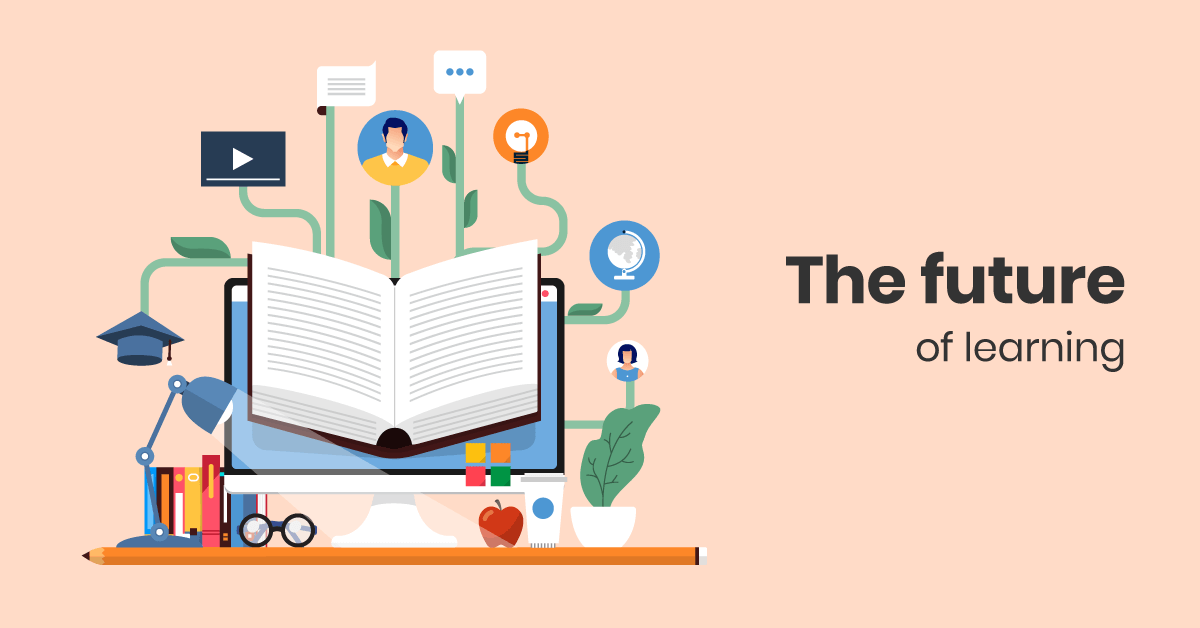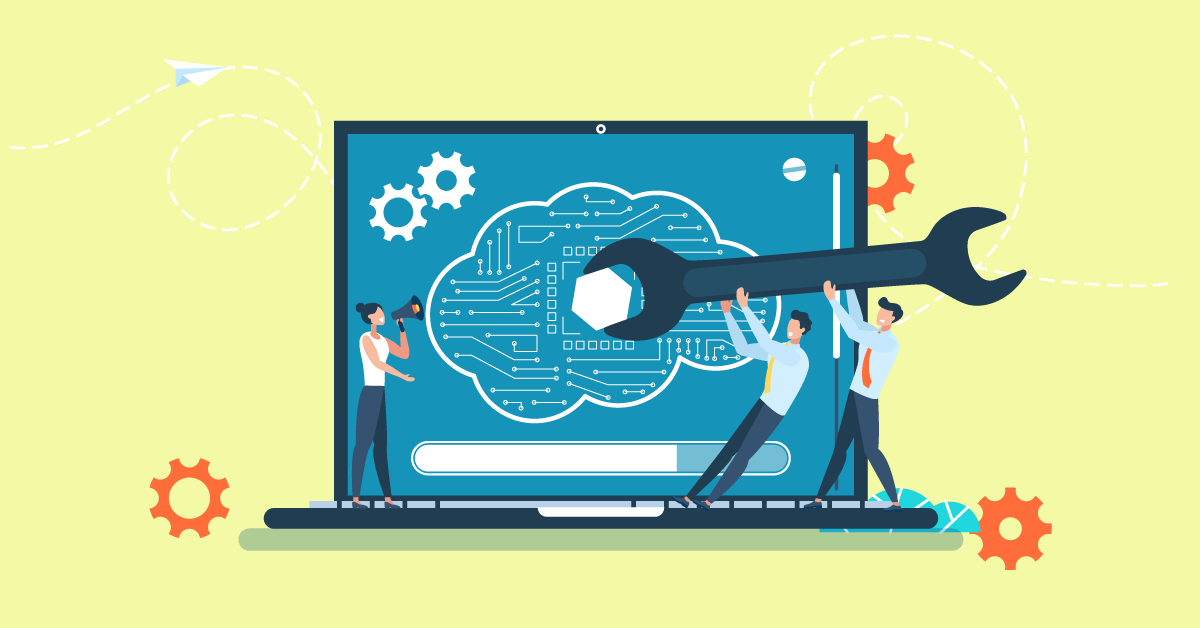No, this is not an exaggeration: our work environment and the tools we use to collaborate with our coworkers have changed dramatically within the past decade. Remember what meetings used to look like just a couple of years ago? Or, how we’d beat our brains out trying to calculate numbers through complex formulas?
Now, lots of those meetings have been replaced with a quick chat on Slack or a Zoom catch-up call. And analytics tools collect data that we couldn’t even imagine getting in our hands. Digital transformation and the rise of remote work have indeed revolutionized business functions, like employee performance and communication.
But does this hold true for all business functions? Not quite. When it comes to employee training, we still have a ways to go.
Learning and development trends evolve fast but many companies are still playing catch-up, while others are reluctant to update the ways they deliver training. A printed manual when onboarding new hires or a single presentation for cybersecurity threats… are not going to cut it anymore. The same “online-first” mentality we’ve started implementing in how we work needs to become the norm in how we approach employee training.
So how do you innovate and re-design your L&D departments so they’re prepared for future needs? And what does the future of training and development look like?
Hop on board, we’ll take a look.
The L&D departments of today
Although eLearning is becoming increasingly popular, companies still rely on older technologies to deliver online training. However, there are some hints that things are about to change.
Here’s how the L&D landscape looks like today:
The need to invest in training has become clearer
There are several studies that connect continuous learning with company growth. And companies seem to be getting the message: training matters. Employee training helps build trust and ensures consistent customer service. It also helps unlock your team’s full potential — which in turn, decreases employee turnover.
For the most part, CEOs and HR departments understand that to get all these benefits, they’ll have to make an investment. Getting the right tech, tools, and personnel to create and implement a solid training plan is not necessarily cost-prohibitive, but many companies don’t know where to begin when preparing their training budgets.
The differences between in-person and online training are sinking in
As more and more companies explore permanent remote work or hybrid working options, online training gains ground. And although the pandemic outbreak may have forced us to shift from in-person to online training, it’s now becoming clear the latter comes with benefits.
In-person training may better replicate the classroom experience — but that’s not necessarily a good thing. In classrooms, people who are not very vocal will have a different learning experience than those who are. Instructors tend to engage more with active learners and leave the rest behind. Plus, in-person training means instructors need to physically attend the lessons, which is both more expensive and more limiting for companies.
With online training, it’s easier to personalize each learner’s experience and play to their strengths. And you can choose from a much bigger pool of experts since physical presence is not a prerequisite.
… and the L&D departments of tomorrow
Wondering what the future L&D departments will deal with? Let’s a look at some upcoming trends:
A shift in mentality
Far from being just a means for compliance or learning the basics to get the job done, employee training is poised to become a strategy that adds business value. As this Training Industry article points out, training will have to start with the outcome.
Designing onboarding and training programs will require working backward from the desired outcome to create the architecture that will support and measure the learning needed to reach it. This will have to cover training content, duration, modality, and how all these components work together.
New technologies will disrupt traditional learning
In many ways, the disruption of traditional learning has already begun. Online learning relies a lot on asynchronous communication, as learners are watching instructional videos and answering quizzes in their own time. But apart from delivery methods, the content itself is changing.
New technologies like volumetric videos can help remote learners retain information. The ability of such tools to create immersive scenarios means that you can now cater to different learning styles, making the process more sustainable. Visual, auditory, and kinesthetic learners can all benefit equally and learn from the same content.
Training will become more personalized
One of the leading trends in corporate training is having a growth mindset. Training will become more focused on long-term career goals and professional development instead of specific tasks to master the job at hand. This makes sense if you think about how fast technologies are changing. A successful employee is no longer one who has achieved narrow specialization, but one who’s flexible and willing to learn many different things.
Likewise, a successful learning and development program is not one that helps employees tackle current issues, but one that prepares them for future challenges.
And to do so, you need to create custom learning paths. AI will play a key part here. AI bots can study a learner’s patterns and preferences, and deliver more relevant content for them to study. The AI bots of the future can also act as digital learning assistants, guiding learners in their personalized journey.
Informal learning will take on a bigger role
We’re already seeing a transition from formal to informal and continuous learning. This transition is bound to become more prominent in the future, as non-linear career paths will make even more employees seek greater diversity in what they learn.
Up until now, employers used to focus strictly on job-related training. But, following employees’ tendency to expand their training to multiple disciplines, they’ll start creating more learning opportunities — even informal. Companies will rely more on social learning, cross-team training, microlearning, and gamification: people just learn better when they learn together — and through play.
Agility will be key
As the overall focus shifts from “what” to “how” we learn, it makes sense that agility will play a big part in the future of training and development. Employees will no longer train to imitate past successes — because past successes will become irrelevant very quickly. Instead, employees will need to learn to be agile: to innovate, and adjust to future challenges.
We already know that 85% of the jobs that will exist in 2030 haven’t been invented yet. Being able to “think on their feet” and make the best in-the-moment decisions in unfamiliar situations is probably the most important trait employees of the future will need to succeed. And learning and development plans will be re-designed to address this need.

Stepping into the future of training and development
Whatever the future of learning may hold, there are some steps you can take now to ensure your L&D department is well poised to handle the latest training trends. Or, even better, be among those who lead those trends.
Opt for a data-driven approach
Your L&D department doesn’t need to prove the importance of training. It needs, though, to demonstrate how learning impacts business performance. Setting training objectives that are tied to employee performance, behaviors, and business goals means that no one is going to wonder anymore whether your investment is paying off.
You can collect data to measure training effectiveness and adjust your training program so that it helps you reach these objectives. Focus on tangible training KPIs like attendance rate, average training completion, and test scores. Then, you can compare these to sales quotas, efficiency increases, and overall growth rate to see if training makes a dent.
Make room for agility and resilience
We’ve already seen how agility will be one of the most crucial learning and development trends. Instead of teaching best practices for situations we know and can predict, your L&D departments should build training around unpredictable situations.
Thankfully, agility is a teachable skill so you can start preparing your team for whatever tomorrow may bring.
Allow “learning by doing”
To add to the above: making room for agility means accepting you can’t train people for every possible scenario. Most of the things employees need to learn about their current job, they’ll learn by doing.
It’s better to offer more soft skills training and social learning to ensure you have a strong team that can tackle anything that comes their way.
Make your training vertically available
Training should not be a luxury reserved for managerial positions — but it also shouldn’t be seen as an “entry-level” necessity employees will outgrow. Everyone in your company should have access to at least some facets of it. This goes for leadership and upskilling/reskilling training as well.
Allowing people from different departments and different hierarchy levels to learn together helps in the long run with everything, from cross-department communication to overall company culture and morale.
Consider the needs of the leaders of tomorrow
And by that, we mean Generation Z. Gen Z employees are independent self-starters. Practically born online and always on their mobile phones, Gen Z will struggle sitting through long Zoom lectures that don’t allow for much participation.
Instead, you should create a training program that includes gamification, microlearning videos, social elements and is highly personalized. It will go a long way towards keeping your younger (and future) employees engaged.
From employer training to learning and development
If there’s one thing you can start doing today to make sure you don’t fall behind, it’s changing your mindset. So far, we’ve been treating employee training as something tactical: a way to cover current skills gaps and reach short-term goals.
L&D departments have now an opportunity to get a strategic role in organizations by planning for the training trends of the future and investing in their people. Training should not be an afterthought; something your employees do before taking on a new task. Training can and will shape how your business grows in the future.



